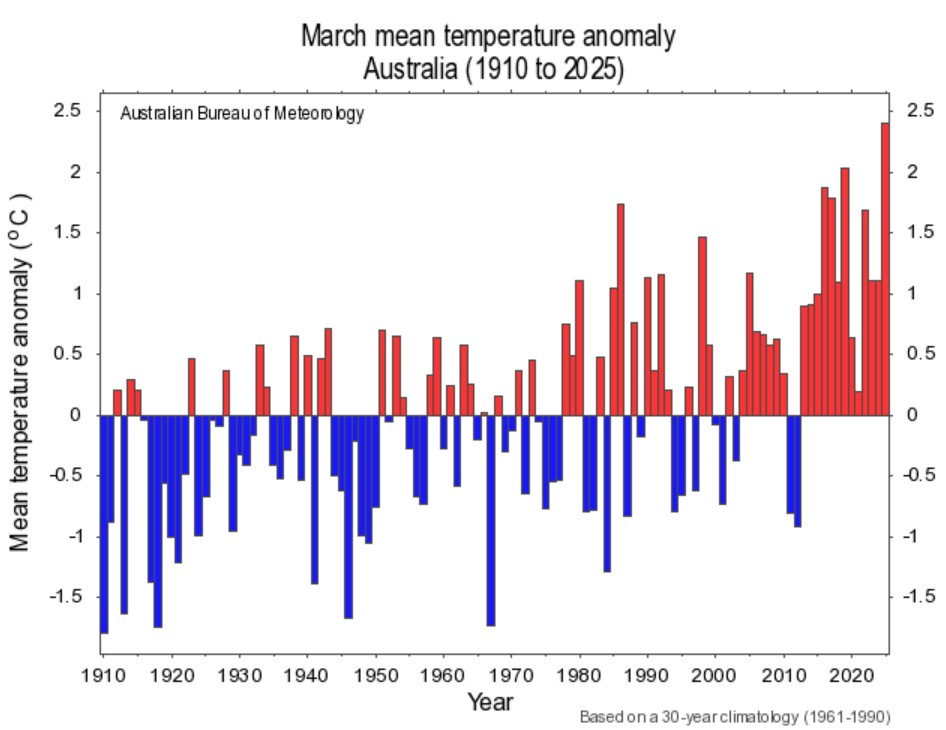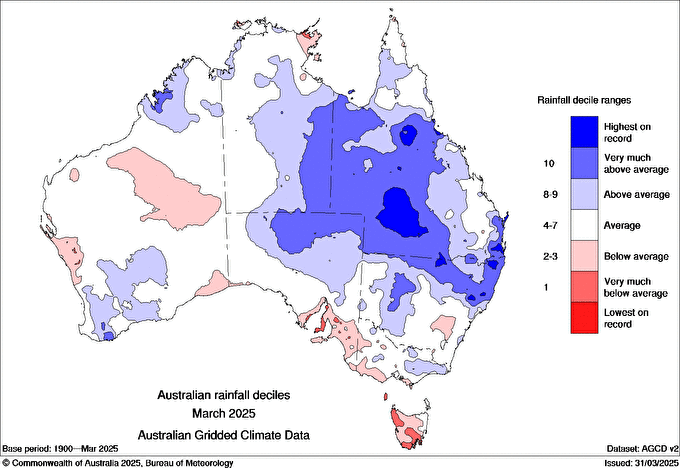Australia's hottest and 4th-wettest March on record
With nationwide average temperatures that were 2.41°C above the long-term average, Australia has registered its hottest March since national records were first kept in 1910.
It was also Australia’s fourth-wettest March on record, with rainfall that was 47% above the long-term average.
Wet weather and above-average temperatures generally don’t go together for the obvious reason that cloudy weather restricts the amount of warming sunlight, therefore it’s likely that the underlying influence of climate change was a factor contributing to Australia's very warm March.

Image: Mean temperature anomalies for Australia from 1910 to 2025. The anomalies are compared to the average of the 30-year baseline period from 1961-1990. Source: BoM.
Temperature statistics for March 2025
- As mentioned, Australia as a whole was 2.41°C above the long-term average, the hottest March on record.
- Each individual state and territory was warmer than normal.
- Three states had their hottest March on record – SA, NSW and WA.
- South Australia registered the biggest anomaly of any state or territory, with statewide temperatures that were 3.26°C above the long-term average.
- Tasmania registered the smallest temperature anomaly, yet it was still the state's 10th-warmest March on record, with temperatures 1.06°C warmer than the long-term average.
Rainfall summary for March 2025
As the blue areas on the chart below indicate, virtually the whole of Queensland and large parts of northern NSW saw rainfall that was very much above average, or even the highest on record, in March 2025.

Image: Rainfall deciles for March 2025, with the darkest blue representing the highest March rainfall on record. Source: BoM.
Overall it was Queensland's 3rd-wettest March on record. The first notable rainfall reading came on March 9, when Brisbane had its wettest day in half a century with 275.2mm recorded due to ex-Tropical Cyclone Alfred.
In the middle third of the month, the wettest part of the country was North Queensland, with Townsville recording its heaviest daily rainfall in 27 years when 301.4mm drenched the city in the 24-hours to 9am on March 19.
Around the same time of the month, a weather station on the Cardwell Range, about halfway between Cairns and Townsville, recorded a 7-day rainfall total of 1090.8 mm.
In the last full week of the month, 24-hour totals of more than 200mm were recorded at weather stations in far western Qld, as a prolonged influx of tropical moisture soaked outback and central Qld and parts of northern NSW.
Despite the relentless rainfall in Qld and parts of NSW, March rainfall totals were below average for most of Tasmania, parts of the mainland's south and west, and parts of Arnhem Land in the Northern Territory.